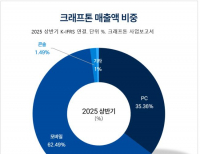Financial statement Quiz 1
1. Which financial statement is divided into three sections: revenues, expenses, and net income (loss)?
a. Balance sheet
b. Income statement
c. Statement of cash flows
d. Statement of retained earnings
2. In its first year of operations, United Universal Corporation's earnings are $2.1 million. Retained earnings at the end of the year were $1 million and contributed capital totaled $5.6 million. How much did the corporation distribute in dividends?
a. $1.0 million
b. $1.1 million
c. $2.5 million
d. $6.7 million
3. Assets measure
a. economic resources
b. current expenses
c. future claims on a firm
d. both (a) and (b)
4. The auditor's opinion states that
a. fraud has not occurred
b. the responsibility for the financial statements rests with management
c. the financial statements are accurate
d. there are no exceptions or qualifications as to the accuracy of the information
5. A steel press machine is purchased for $50,000 cash and a $100,000 interest-bearing note payable. The cost to be recorded as an asset (in addition to the $150,000 purchase price) should include all of the following except
a. freight and handling charges
b. insurance while in transit
c. interest on the note payable
d. assembly and installation costs
KEY:
1. B
2. B
3. A
4. B
5. C
1. The Spirit Company, a manufacturer of cheerleading products, had a beginning balance in raw materials inventory of $20,000. During the year, an additional $80,000 of raw materials was purchased. Raw materials worth $75,000 was transferred to work-in-process inventory during the year. What is Spirit's ending raw materials inventory?
a. $15,000
b. $20,000
c. $25,000
d. $75,000
Value Company's beginning and ending inventories for the fiscal year ended September 30, Year 5, are
October 1, Year 4 September 30, Year 5
Raw materials $15,000 $22,000
Work-in-process $40,000 $35,000
Finished goods $8,000 $12,000
Production data for the fiscal year ended September 30, Year 5, are
Raw materials purchased $ 79,000
Direct labor $ 100,000
Manufacturing overhead $ 75,000
2. Refer to the Value Company example. Cost of goods sold for the year ended September 30,Year 5, for Value Company is
a. $262,000
b. $252,000
c. $260,000
d. $248,000
3. Jordan Inc. is a profitable company with the goal to maximize cash flow. A valid reason for Jordan not to adopt the last-in, first-out (LIFO) method of inventory valuation is
a. prices are rising.
b. prices are falling.
c. the difficulty in segregating goods in the warehouse.
d. the reduction effect on inventory.
4. Using either the FIFO and LIFO cost flow assumption will result in the same cost of goods sold when
a. the number of units in beginning and ending inventory are the same
b. two consecutive years are combined
c. the prices of the goods do not change
d. lower-of-cost-or-market is applied
5. Using the LIFO cost flow assumption can mislead users of financial statement by
a. encouraging managers to increase purchases
b. managers manipulating net income
c. showing increases in short-term liquidity
d. overstating the balance sheet
KEY:
1. C
2. D
3. B
4. C
5. B
※출처를 밝히면 자유롭게 인용 가능합니다.

